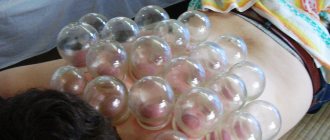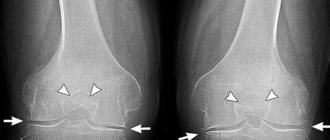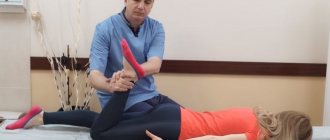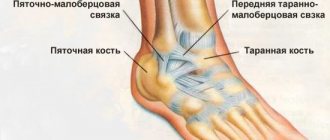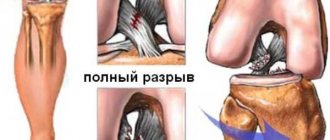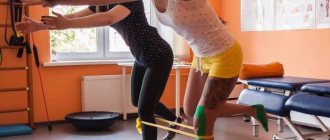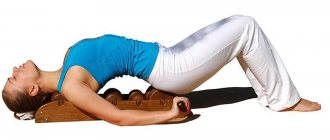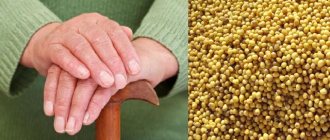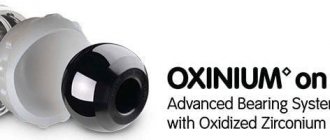Since arthrosis of the lower extremities, which affects many people of mature and older age, is characterized by such unpleasant symptoms as pain in the joint, decreased mobility and deterioration of local metabolism, patients sometimes believe that they can stop degenerative processes by regularly riding a bicycle. Also, the question of whether it is possible to ride a bicycle with arthrosis of the knee joint faces amateur cyclists who do not want to give up their favorite sport.
Patients are interested in whether such loads are indicated for them, what their frequency and duration should be: is it possible to travel on a bicycle, go for a ride in the nearest forest or park once a week, or pedal an exercise bike. This article examines the benefits and harms that cycling and exercise can bring to patients with the indicated disease.
Machines used to develop articular joints
The benefits and harms of pedaling for bone and cartilage tissue
The positive and negative effects obtained from the use of an exercise bike for degenerative changes in the lining of the knee joint largely depend on the training regimen and consideration of restrictions. Benefits observed with cycling include:
- Increased range of motion of the joint. Prevents the development of deformation and other defects.
- Burning calories. Leads to weight loss, which is important for those suffering from arthrosis, since additional kilograms lead to increased stress on the knees and progression of the disease.
- Strengthening the leg muscles. It also helps reduce the load on the joint.
- Increased blood circulation in the joint area and adjacent soft tissues. Leads to improved metabolism in the tissues of cartilaginous surfaces and stops their destruction.
If negative effects occur during this type of training, this may be due to a load regimen that is inadequate to the current state of the joints. The following phenomena may occur:
- Erosion of cartilage due to excessively high loads in late stages of the disease or too early in postoperative rehabilitation.
- Inflammation of the joint due to tissue irritation due to improper movement technique during training.
Exercise bike for early stages of arthrosis of the knee joint
Power training
Maintaining strong muscles around the knees is essential for optimal knee health and preventing unnecessary progression of knee damage. Additionally, it has been found that a strong core and hips can also improve overall knee health. Therefore, a regular low-impact training regimen that focuses on high reps and low weights is ideal. Typically, a well-balanced routine can include variations such as leg presses, leg curls, mini squats, standing hip abduction, hip adduction, and your favorite core exercises.
The key to choosing the best exercise machine for bad knees is using your symptoms as a gauge. If a particular exercise causes increased pain, feels unstable, or just turns off, it's best to try other options that keep your knees comfortable.
There is no need to force any exercise that feels wrong. All four options above are great for both your overall health and your knee health. Ideally, it's best to mix it up to keep it exciting and appealing while working on your fitness goals.
Why do my knees hurt after exercise?
Mild muscle pain is a normal and common symptom, especially in untrained people, however, if the patient experiences sharp or aching pain in the knee after exercising on the simulator, there is reason to be wary. Pain in such situations may be due to one of the following reasons:
- Excessively high load regime, not relevant to the condition of the knee. In this case, you need to exercise in moderation.
- Excessively long training sessions.
- If the patient starts exercising immediately after an injury or at too early a stage of rehabilitation.
- An inflammatory process caused by non-compliance with the technique.
In any case, before starting classes, you need to consult a doctor about the advisability of training in the current state of the joint and not to exceed the duration of classes and the intensity of the load prescribed by the doctor.
If pain makes itself felt while pedaling and there are no visible signs of inflammation (swelling, hyperemia, local increase in temperature), you need to rub your knee with your hands until the skin turns red. After this, the tissues will receive better blood supply, and the pain should go away.
Patient exercising during rehabilitation after knee surgery
Rowing Machine
There is a wide range of technologies available for rowing these days. However, the basics still apply. You set up by sitting on a bench with your feet in straps in front of you. You then grab the rowing rod or handles in front of you. Now you are ready to begin the rhythmic movement, bending your knees and then pulling your arms back as you push your legs. Older machines require you to manually set the resistance, while newer ones are programmed.
Rowing is considered low impact on joints and has excellent cardiovascular benefits. Plus, it's safe for those with balance issues, and it works the mid-back muscles that other cardio machines don't traditionally target. This is a fantastic option for bad knees as long as you can tolerate the repetitive bending of your knees.
Is it possible to exercise with various diseases?
The exercise regime for different diseases of the leg joints varies. Let's consider whether exercises with an exercise bike are indicated for the most common diseases of the limbs and what the limitations are.
Exercise bike for arthrosis
For patients with arthrosis of the leg joints, such types of physical exercise as strength training, aerobic training and running are contraindicated. However, for patients with early stages of knee arthrosis, forms of exercise such as exercise on an exercise bike, skiing and Nordic walking with poles are recommended. You can do them only outside the period of exacerbation. In the later stages of cartilage degeneration, such activities are contraindicated - in this condition, one careless movement can lead to even more serious problems with the limb.
- Exercise bike for knee arthrosis
When weather permits, the patient can also go for walks with a regular bicycle. In this case, you need to think through the route in advance, choosing a flat road. Riding on a bumpy road is likely to lead to microcracks in the cartilage and disruption of the structure of ligaments and muscles.
When choosing a simulator for a patient with arthrosis, you need to find a model that has flexible resistance settings. It is necessary that when applying force to the pedals there is no need to make pushing and sudden movements. They can cause minor injuries. The initial duration of classes is 15-20 minutes, over time it is gradually increased by one and a half to two times. If the patient feels pain, training should be stopped.
The patient is trained on a machine with a small range of motion, which is useful in the initial stages of the knee development process
Exercise bike for coxarthrosis of the hip joint
For patients with arthrosis of the hip joint, a simulator designed for exercise in a horizontal position is suitable. It will provide a suitable load distribution in this case. As with knee damage, exercise can only be done in the early stages of destruction of the cartilage pads. Starting with a horizontal exercise bike, after consulting with a doctor, you can move on to a regular exercise bike, which should have small pedals and an appropriate range of motion.
After endoprosthetics
After an operation to replace an articular joint with an artificial implant, you can start training on the simulator no earlier than two months later. However, the timing, choice of simulator and load dosage here are largely individually variable, since rehabilitation can proceed very differently and be accompanied by complications of various natures, including the need for repeated surgery. The training program is drawn up by the physician who is caring for the patient. Typically, patients who have undergone endoprosthetics begin with horizontal versions of the simulator and short workouts lasting two to five minutes with a gradual increase in duration.
Cycling simulator, which is performed in a horizontal body position
For arthritis
Patients with infectious and other inflammatory lesions of the leg joints are strictly prohibited from using an exercise bike and other loads on the joint during the acute stage. During this time, the patient observes strict bed rest. Training is indicated only outside the acute stage if there are confidently positive dynamics and the patient’s condition is striving for a complete recovery. The training program is prescribed by the attending physician. Sometimes it is recommended to combine the exercise machine with moderate strength loads.
For gonarthrosis
For problems with the knee, the best option would be if the patient detects the development of the disease at a very early stage and undertakes comprehensive treatment, including a simulator. If started when tissue breakdown has just begun, training will stop further degeneration by significantly improving blood flow and local metabolism. The ideal option would be to combine training with physiotherapeutic procedures, such as electrophoresis with chondroprotective drugs, amplipulse therapy or applications with hot paraffin. It is better to perform training at a time of day when there is maximum mobility and the least pain in the joint.
If pain makes itself felt during the exercise, it must be stopped. If inflammation of the joint occurs, as well as with advanced forms of arthrosis, working with the exercise machine is not recommended.
Exercise bike for knee pain
With all due respect to those people who try to avoid visiting doctors and at the same time strive to lead an emphatically healthy lifestyle, incorporating an exercise bike into it for knee pain, we would like to note that the level of culture in using sports equipment is not yet very high.
And this level is typical for the majority of residents of our country. According to statistics, only 3-4% of those who visit gyms or buy an exercise bike want to strengthen their knees, precisely for this purpose! - even consult with an ordinary (and not just a sports) doctor. But only he, having before his eyes the results of the examination (X-rays, tests), can make a conclusion - is an exercise bike useful for knee pain in your particular case or, on the contrary, is it contraindicated?
Yes, and yes again: the exercise bike strengthens the knees by improving blood flow and ensuring the best blood supply to the knee joint. The nature of the movements that you make on the simulator, their smoothness and gradualness, helps the cartilage tissue maintain its integrity.
Important! Have you ever fallen to your knees? For example, stumbling, with a characteristic shift of body weight forward? The pain in my knees did not go away for a long time. A very long time! And now that they have passed, the exercise bike will strengthen the knee joints, provide good nutrition to the joint tissue, increase joint mobility, minimize the risk of injury, and relieve stress, eliminating unnecessary tension. Helps you walk easier and faster. An exercise bike is also indispensable for the spine.
But - attention! - let's be honest: this is an abstract exercise bike for an abstract person. And when buying a sports unit, you have to examine a very specific mechanism (an exercise bike for joints in different configurations can be beneficial or harmful) and, most importantly, a very specific person with a “bouquet” of ailments and simply physiological characteristics peculiar to him.
Let's take a simple example: does an exercise bike have a beneficial effect on the knees, if we are talking about a person who is overweight and kills his knees even if he does not carry out any special effects on the joints, but simply stands - 40-50 minutes in the Moscow metro every day?
In this case, the source of pain is excess weight. And minimizing this excess weight with the help of cardio training (not necessarily an exercise bike, but why not?) is possible and necessary. During progressively increasing physical activity, the load on the joints will be minimized. The heart and blood vessels will also be unloaded, and the risk of heart attack and stroke will decrease. And the pain in my knees will also go away.
What if you already have a diagnosis?
Why is pedaling best?
For a number of reasons, working with an exercise bike, especially one that is properly chosen taking into account the limitations of the patient’s condition, is much preferable to riding a regular bicycle. This is due to the following factors:
- Modern exercise machines have the flexibility to adjust resistance and other settings, which is crucial for those suffering from arthrosis, since pressing the pedals with force can lead to microtrauma and worsening the condition.
- A stationary simulator is much less fraught with tissue damage than driving over rough terrain or uneven roads.
Proper selection of the device and dosed exercises in accordance with the requirements of the current state of health contribute to rapid rehabilitation for pathologies of the joints of the lower extremities.
Osteoarthritis of the knee joints is a disease that takes many people by surprise. Do your knees hurt? This phenomenon is observed in almost half of mature and older people.
- The benefits and harms of an exercise bike for arthrosis of the knee joint, indications for exercise and contraindications
But a person, feeling alarming symptoms, cannot yet imagine that he is developing arthrosis of the knee joints. When he finds out about this, he is in a state of shock for some time. You have to come to terms with the fact.
But the fact that the disease is incurable is not worth it. And to help enterprising optimists, effective simulators have been created that can help at different stages of the disease.
Multifunctional devices: ellipsoid
An elliptical trainer for knee arthrosis relieves the symptoms of the disease slowly but surely.
Since destructive processes have affected the joint that is most mobile and subject to constant loads, the first condition is not to expose its segments to excessive loads. And this must be taken into account when releasing special simulators.
- Why elliptical? The fact is that the pedals located on the device describe an elliptical trajectory during movements, which involves a significant reduction in the load on sore joints.
- What is an elliptical trainer? This is a device that resembles a bicycle, only without wheels. A person leans on the handles located in the upper part so as not to lose balance. And at the bottom there is an oblong body that allows the pedals to scroll forward and backward, simulating the movements of walking up stairs, riding a bicycle, moving on a flat surface, etc.
The secret is that such training significantly reduces the load on the knee joint, but at the same time effectively trains the muscular system.
Stepper
Sports equipment for the treatment of sore knee joints are made taking into account the age, height and weight of people, and therefore must be selected individually, and not just anyhow. Otherwise, instead of the expected positive effect, a person risks getting new complications.
Which trainer is better? Only the attending physician can answer this question. For example, steppers, which are devices with pedals, force the knee joints to move synchronously - when one knee bends, the other is straightened. In this case, minimal load is placed on the affected joint. From the outside it seems that the person is walking in place.
Depending on the diagnosis, for gonarthrosis, simulators for the knee and hip joints, which are a stepper with a swing, can be used:
- A person is in a sitting or lying position, his knees lie on supports - swings, and his feet press the pedals.
- Thus, there is no pressure on the diseased joints - only the muscular system of the lower extremities is subjected to training, thanks to which metabolic processes are improved and blood circulation in the affected tissues is accelerated.
Advantages of the Artromot K1 mechanotherapy device
The main advantage of the Arthromot K1 device is a patented German motor, thanks to which the device operates smoothly and in the correct physiological mode, and rehabilitation is painless, effective and without the risk of injury.
Another feature of this model Artromot K1 is the presence of a heating function. It allows you to gradually increase the degree of flexion and extension, gradually reaching the programmed maximum degree. This allows you to warm up the joint and prepare it for the main work on Arthromot - increasing the degree of flexion or extension.
In addition, a special mode allows you to set pauses at the maximum points of flexion or extension. Thanks to this function, the knee or hip joints are stretched in a static position, which gives good results in the treatment of contractures
Exercise bike
This device can also be used to treat knee joints. Moreover, both training on a simulator and riding a regular bicycle have an equally good effect on the knee joints.
- A person sits on a small “pillow” - it accounts for the bulk of the body weight. To make a circle with the pedals, the patient makes a muscular effort.
- The muscles are trained, while one straightened limb forces the other to bend at the knee. This is important when the functions of the diseased knee joint are limited, and the patient cannot independently perform flexion-extension movements.
Recommendations
Doctors recommend choosing exercise equipment that:
- How does an exercise bike help with knee arthrosis?
- They do not take up much space in the apartment.
- Suitable for age and weight parameters.
- They are of high quality (the product may be expensive, but it is durable).
- They are purchased for their intended purpose and are constantly used, rather than collecting dust in the corner.
- Used in combination with other treatment methods.
People who buy exercise equipment, for the most part, at first are not overjoyed with their purchases, and then, passing by, they begin to quietly hate them, because in connection with them an association arises: training is pain. We must understand that at first this is inevitable. "Patience and a little effort".
After a few months of exercise, the patient will be surprised to find that the pain in the knee has disappeared, the extra pounds have disappeared, and the legs have acquired a beautiful relief.
If you want to get more information and similar exercises for the spine and joints from Alexandra Bonina, check out the materials on the links below.
Additional useful information:
See more useful materials on my social networks:
| | | | |

